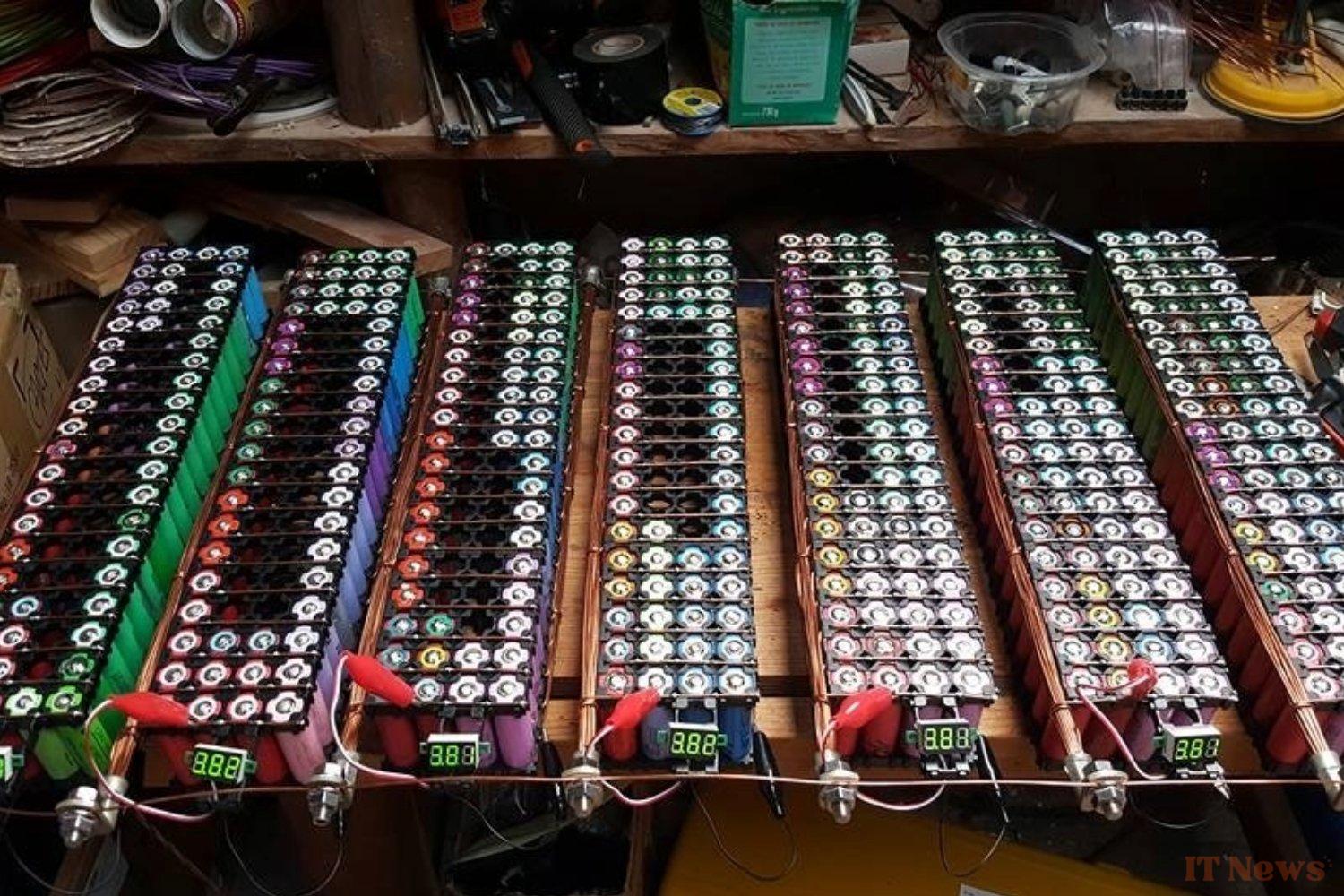The story takes place in the United States, in Colorado, where a certain Jehu Garcia, passionate about technology and energy autonomy, decides one day to give a second life to lithium-ion batteries destined for landfill. The idea may seem absurd, but it is based on a reality A technique well known to electronics enthusiasts: most laptop batteries are not completely useless. On average, they retain between 60% and 80% of their capacity, even after being declared "dead".
A patient and methodical quest
For months, Jehu collects hundreds of battery packs, mainly through recycling channels or donations. He disassembles each battery, extracts the cells (18650 type, widely used in portable electronics), tests them one by one, and then uses them to find the batteries. one with equipment he developed himself, then sorts the functional cells.
In total, more than 650 batteries were needed to build a power bank capable of running his entire house. This represents approximately 1,200 cells, carefully sorted, soldered, and assembled into homemade modules. To ensure security, he integrates a BMS (Battery Management System) that monitors temperature, voltage, and cell balancing.
For the system to be truly autonomous, a renewable energy source was also required. Jehu therefore installed solar panels on the roof of his house, coupled with an inverter and a recycled battery pack. The principle is simple: during the day, the panels recharge the batteries. In the evening and at night, the stored energy takes over.
The result: a house that operates completely autonomously, 24/7, without reconnecting to the conventional electricity grid. The fridge, lighting, tools, computers, even the washing machine run on this system.
An ecological and economical approach
This system is not just a technical feat. It is also part of a logic of reducing electronic waste, fighting against planned obsolescence and reappropriating energy.
By using used batteries, Jehu avoids the purchase of new components, which are often expensive and polluting to produce. It also helps give a second life to materials that are too quickly considered as "waste".
On the budget, the savings are real: with a very moderate installation cost (less than $3,000 for the whole system, including panels), it ensures lasting energy independence, for an investment that pays for itself in just a few years.
A documented and shared adventure
Since the beginning of his project, Jehu has shared every step of his adventure on his YouTube channel, which has become a reference in the field of DIY solar. He explains his technical choices, his failures, his successive improvements, and even provides tutorials for those who would like to follow in his footsteps. His initiative has inspired a large community of DIY enthusiasts and supporters of the gentle energy transition.



0 Comments